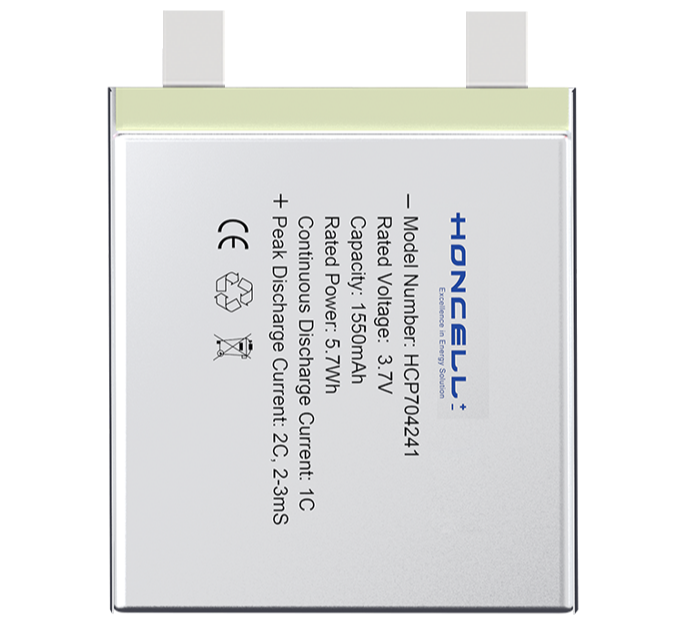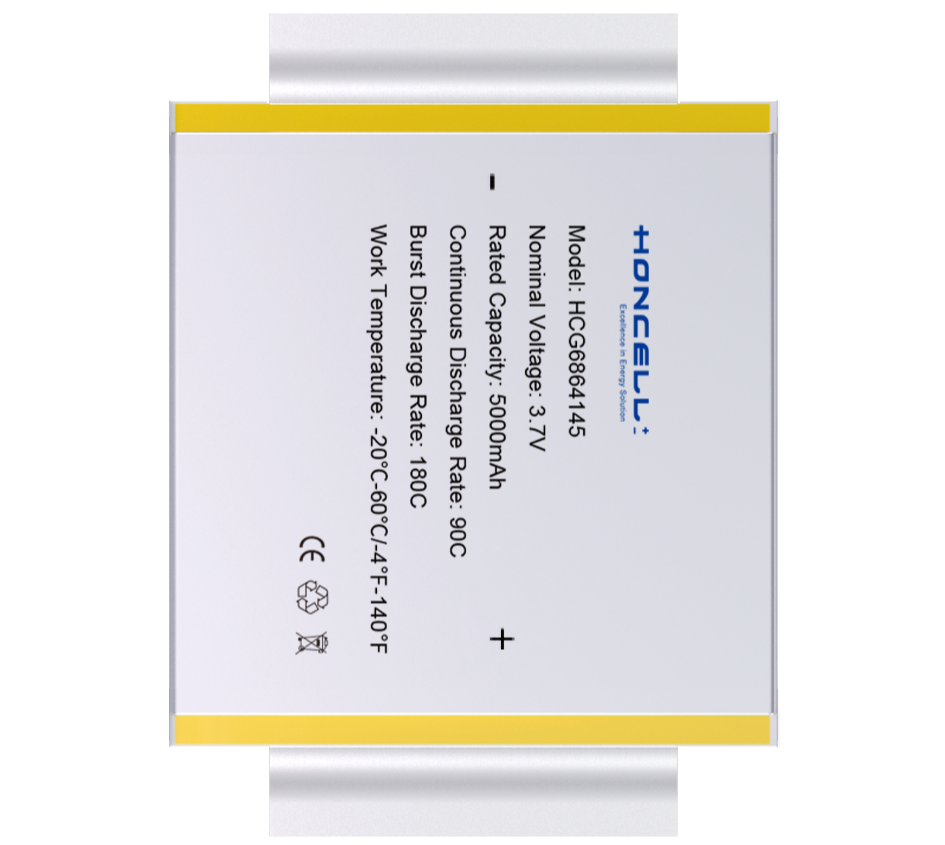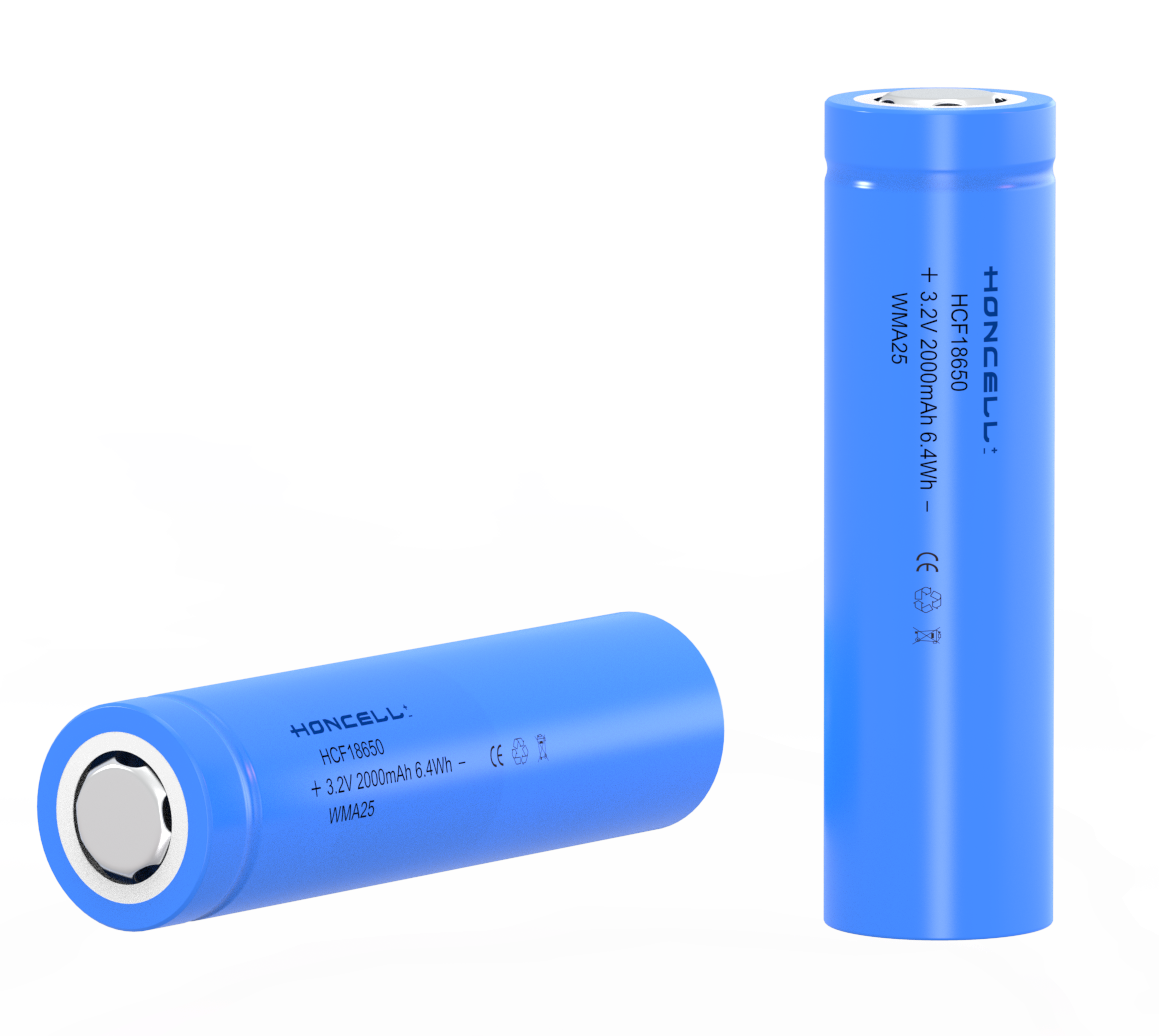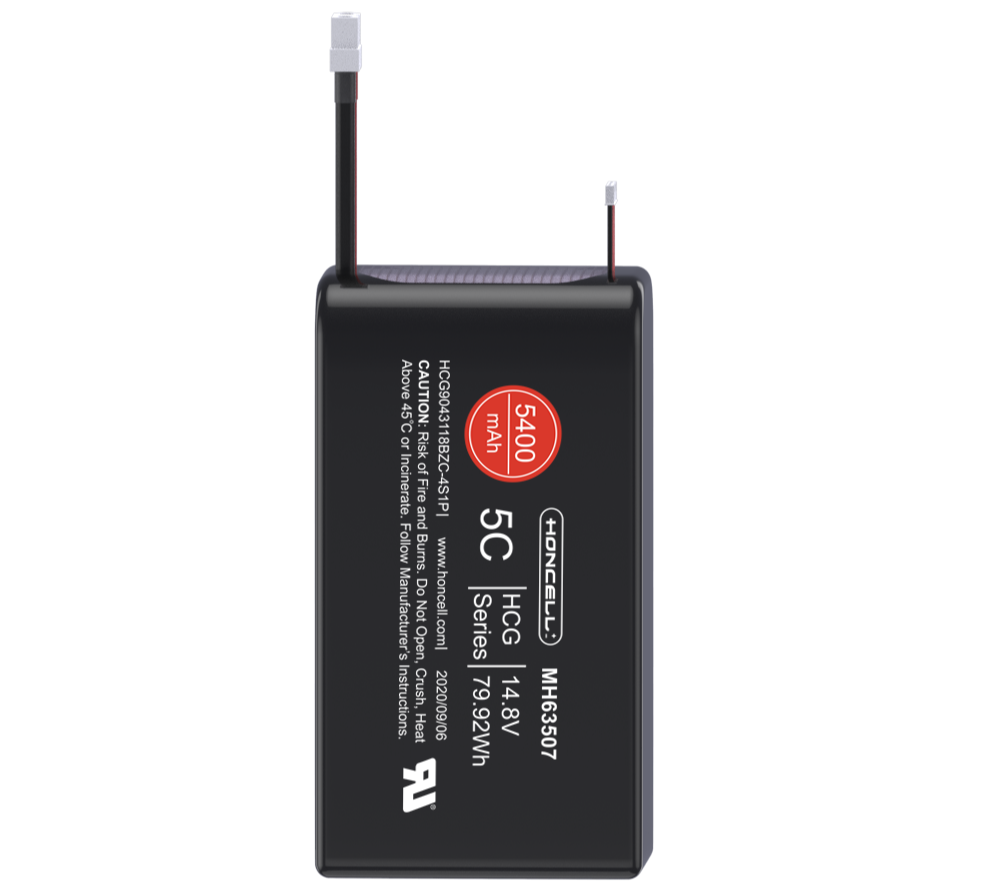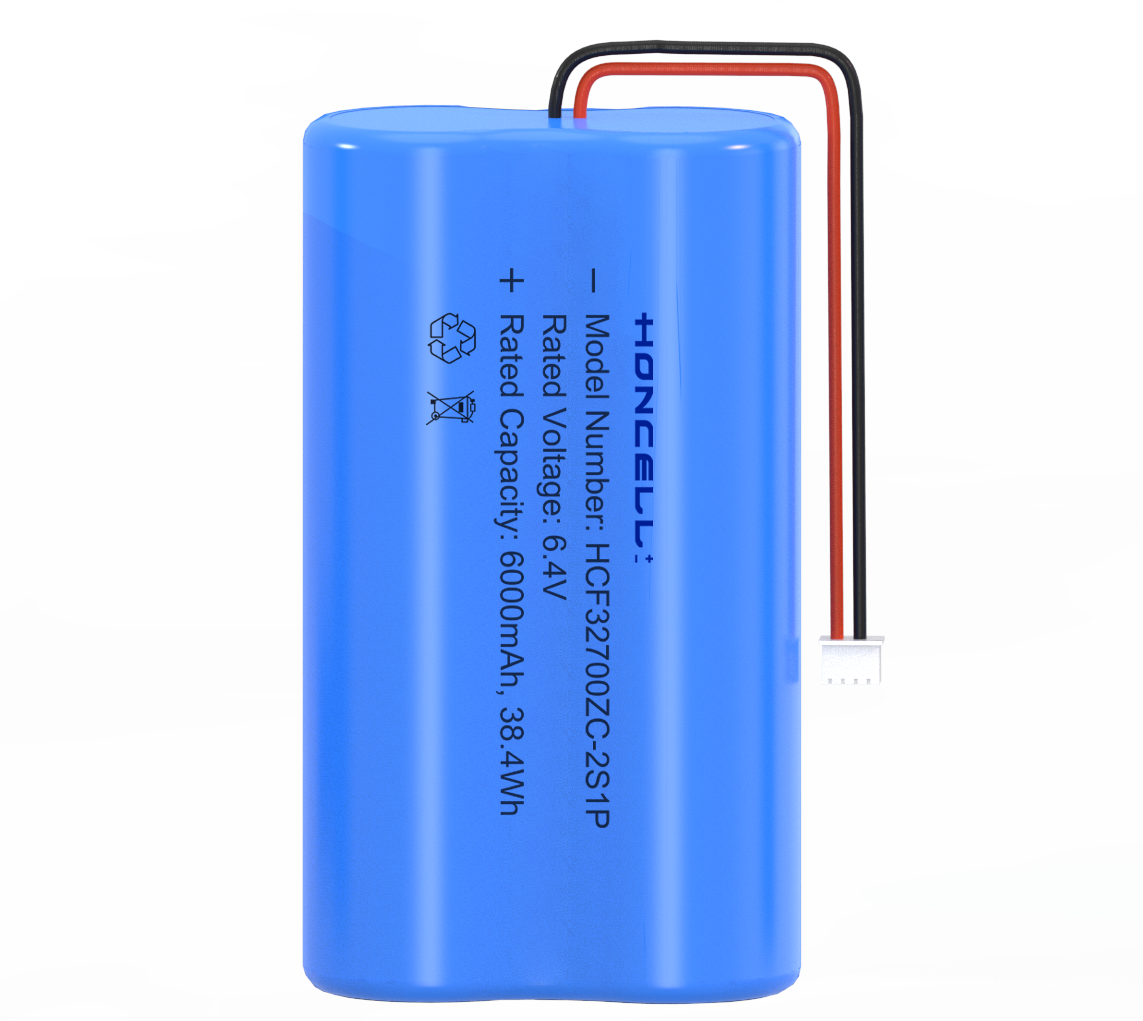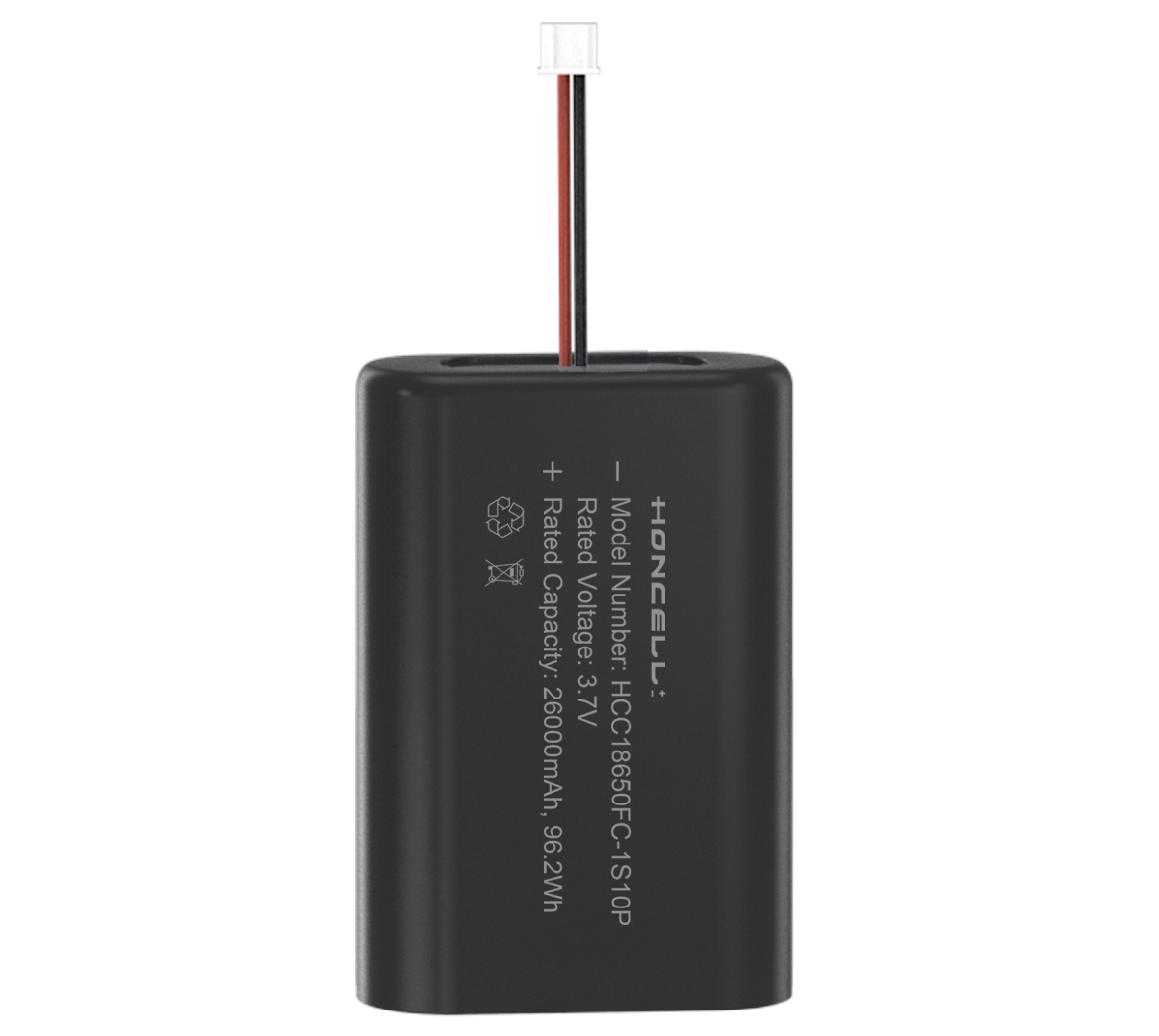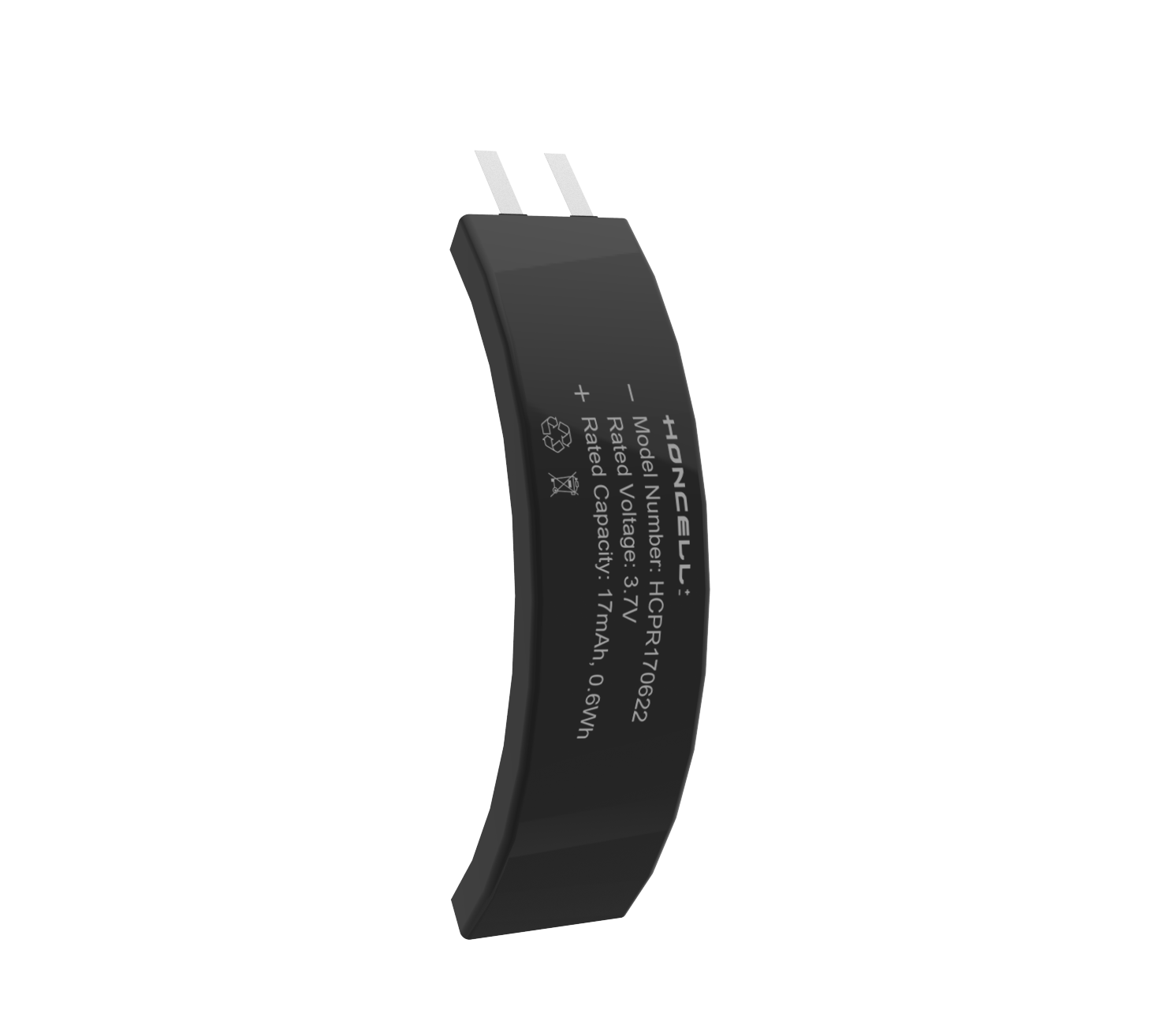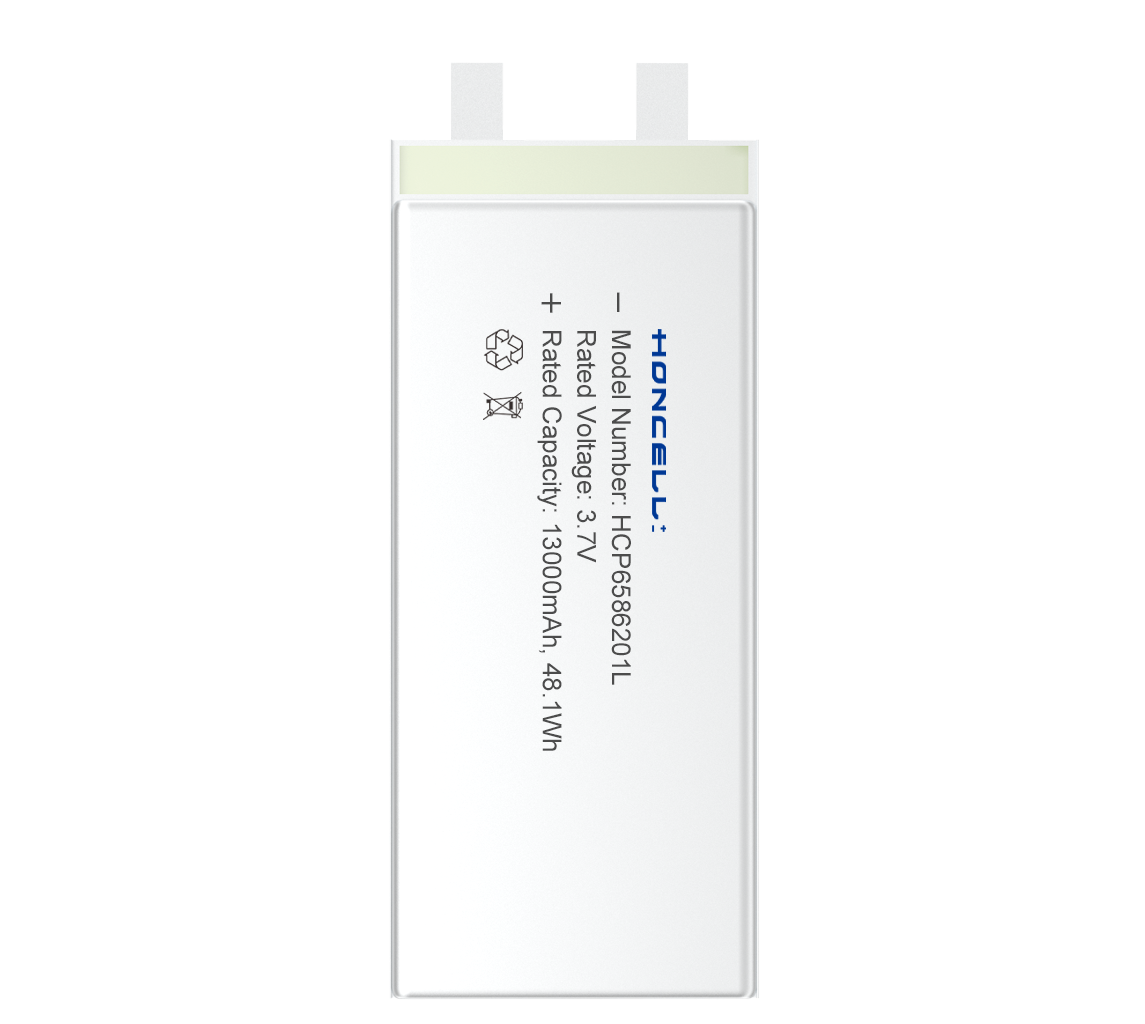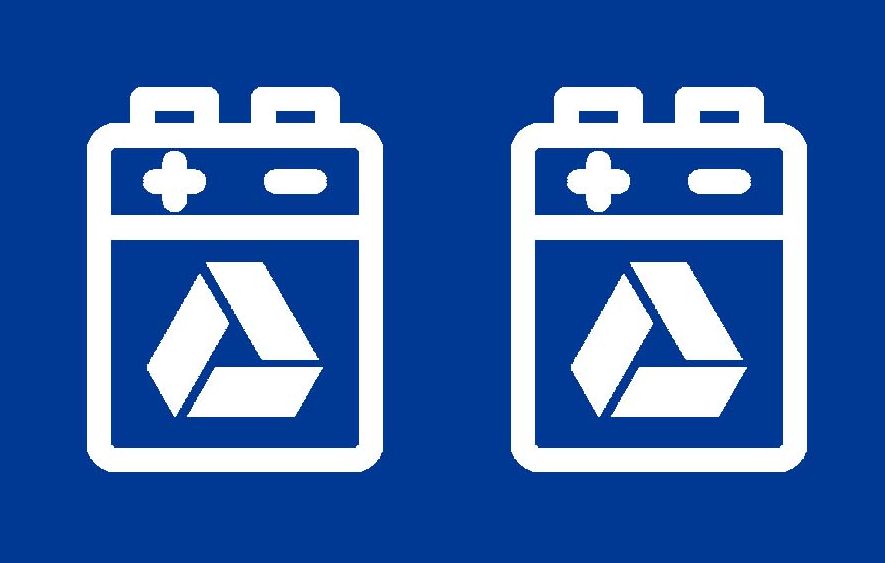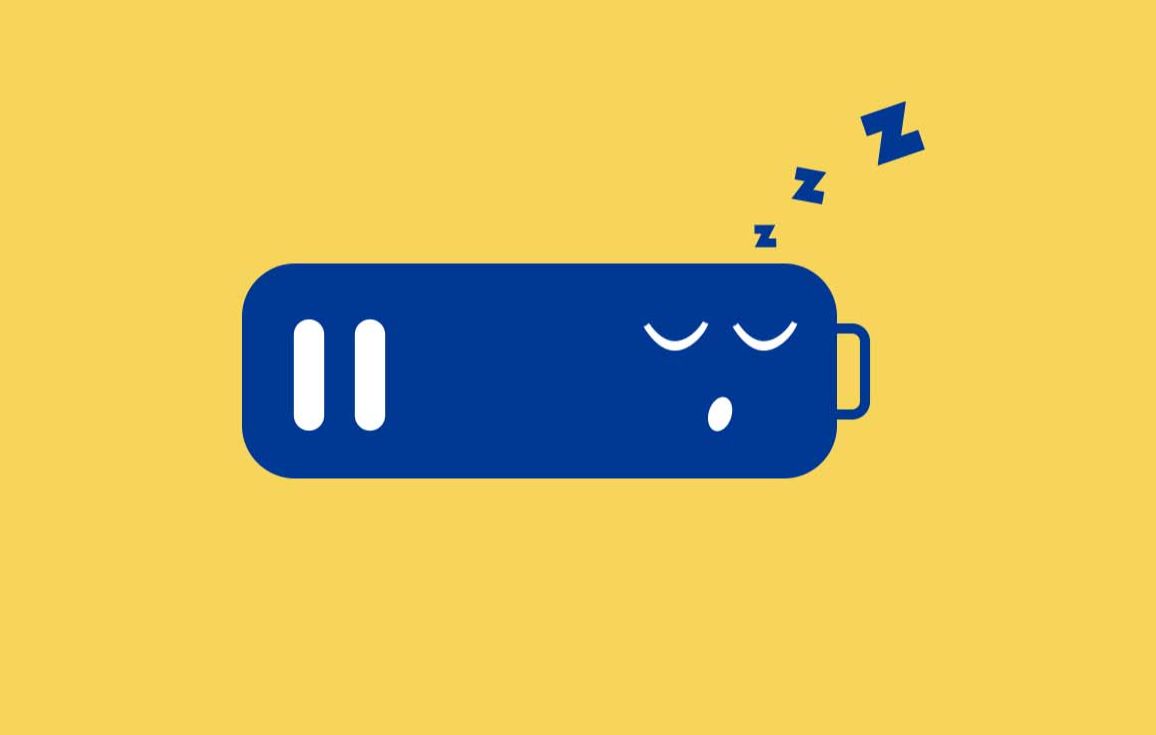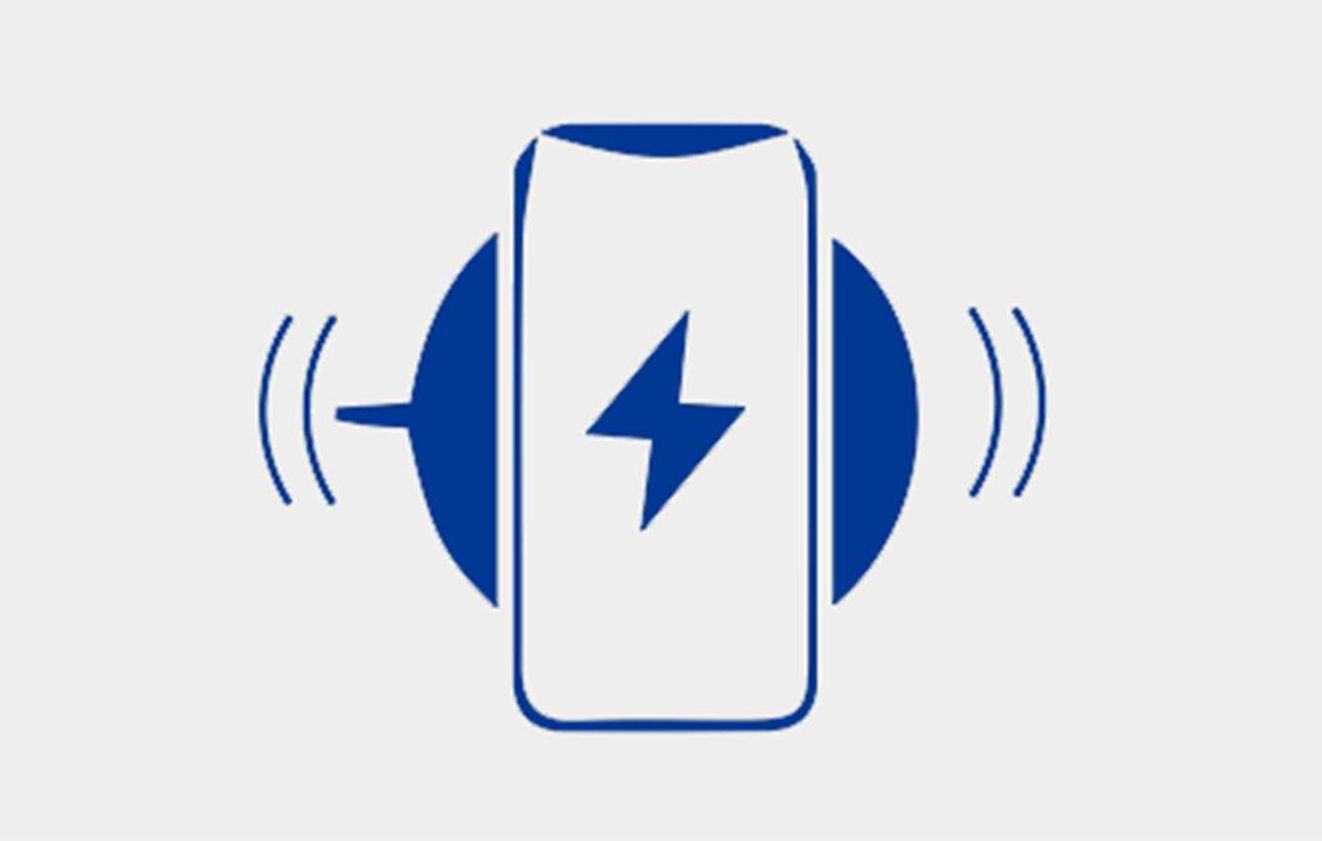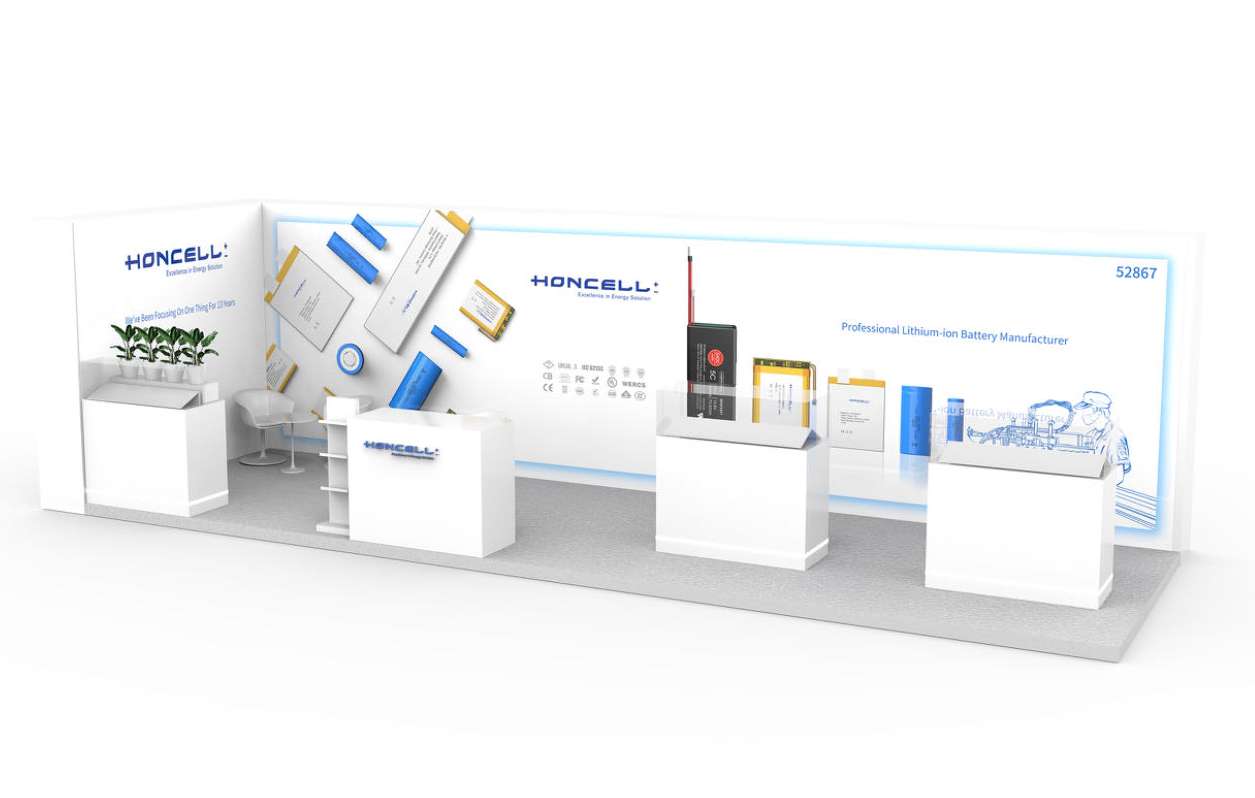-
Performance Test
-
Free Fall
-
-
Mechanical Test
-
Vibration Test
-
Forced Discharge (Cells)
-
Thermal Abuse
-
Impact
-
External Short-Circuit(Cell)
-
Crush (Cell)
-
-
Free Fall
-
Procedure
Free fall test is conducted at an ambient temperature of 20 °C ± 5 °C, by using cells or batteries that are charged to a fully charged state. Each cell or battery is dropped 3 times from a height of 1.0 m onto a flat concrete floor or metal floor. The cells or batteries are dropped so as to obtain impacts in random orientations. After the test, the cell or battery shall be put on rest for a minimum of 1 h and then a visual inspection shall be performed.
-
Acceptance Criteria
No fire, no explosion.

-
-
Vibration Test
-
Test Procedure
A battery is to be subjected to simple harmonic motion with an amplitude of 0.8 mm (0.03 in) [1.6 mm (0.06 in) total maximum excursion]. The frequency is to be varied at the rate of 1 Hz/min between 10 and 55 Hz, and return in not less than 90 nor more than 100 min. The battery is to be tested in three mutually perpendicular directions. For a battery that has only two axes of symmetry, the battery is to be tested perpendicular to each axis.
-
Acceptance Criteria
The samples shall not explode or catch fire. In addition the sample shall not vent or leak.
-
-
Forced Discharge (Cells)
-
Requirements
A cell shall withstand polarity reversal without causing fire or explosion. A protective device in a battery or system can be adopted.
-
Test
Discharge a single cell to the lower limit discharge voltage specified by the cell manufacturer.
The discharged cell is then subjected to a forced discharge at 1 It A to the negative value of the upper limit charging voltage. The total duration for the forced discharge testing is 90 min.
If the discharge voltage reaches the negative value of upper limit charging voltage within the testing duration, the voltage shall be maintained at the negative value of the upper limit charging voltage by reducing the current for the remainder of the testing duration. (Case 1 of Figure 1) If the discharge voltage does not reach the negative value of upper limit charging voltage within the testing duration, the test shall be terminated at the end of the testing duration. (Case 2 of Figure 1).
-
Acceptance criteria
No fire, no explosion
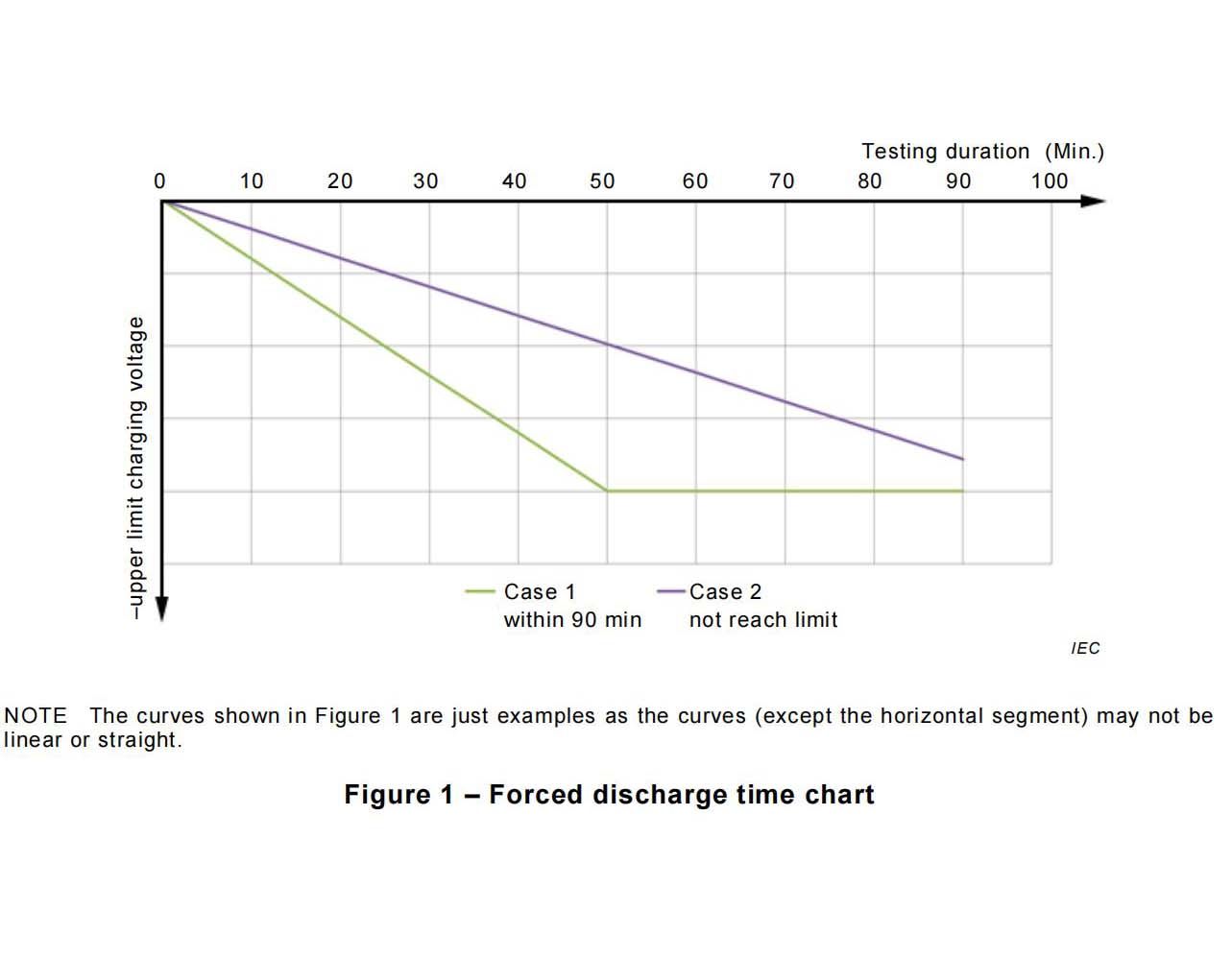
-
-
Thermal Abuse
-
Procedure
Each fully charged cell is placed in a gravity or circulating air-convection oven, in an ambient temperature of 20 °C ± 5 °C, for 1 h. The oven temperature is raised at a rate of 5 °C/min ± 2 °C/min to a temperature of 130 °C ± 2 °C. The cell remains at this temperature for 30 min before the test is terminated.
-
Acceptance criteria
No fire, no explosion.
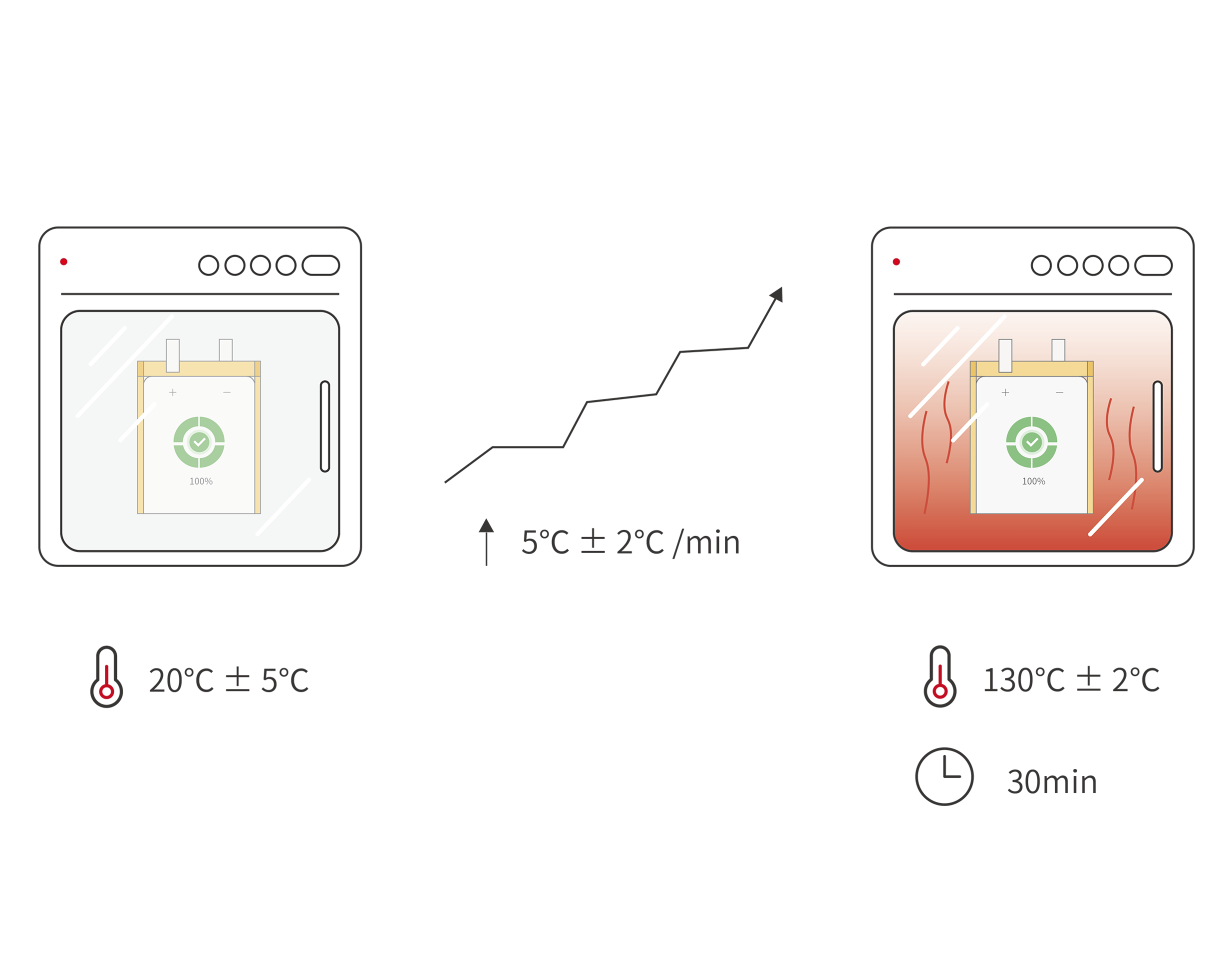
-
-
Impact
-
Procedure
A test sample battery is to be placed on a flat surface. A 15.8 ±0.1-mm (5/8 ±0.004-in) diameter bar is to be placed across the center of the sample. A 9.1 ±0.46-kg (20 ±1-lb) weight is to be dropped from a height of 610 ±25 mm (24 ±1 in) onto the sample.
-
Acceptance criteria
The samples shall not explode or catch fire.
-
-
External Short-Circuit(Cell)
-
Procedure
Fully charge a cell and store it in an ambient temperature of 55 °C ± 5 °C. After stabilization for 1 h to 4 h and while still in an ambient temperature of 55 °C ± 5 °C, the cell is short-circuited by connecting the positive and negative terminals with a total external resistance of 80 mΩ ± 20 mΩ. The cell remains ontest for 24 h or until the surface temperature declines by 20 % of the maximum temperature rise, whichever is the sooner.
-
Acceptance criteria
No fire, no explosion
-
-
Crush (Cell)
-
Test Procedure
Each fully charged cell, charged at the upper limit charging temperature, is immediately transferred and crushed between two flat surfaces in an ambient temperature. The force for the crushing is applied by a device exerting a force of 13 kN ± 0.78 kN. Once the maximum force has been applied, or an abrupt voltage drop of one-third of the original voltage has been obtained, the force is released. A cylindrical or prismatic cell is crushed with its longitudinal axis parallel to the flat surfaces of the crushing apparatus. Test only the wide side of prismatic cells. A coin cell shall be crushed by applying the force on its flat surface.
-
Acceptance Criteria
No fire, no explosion.
-


